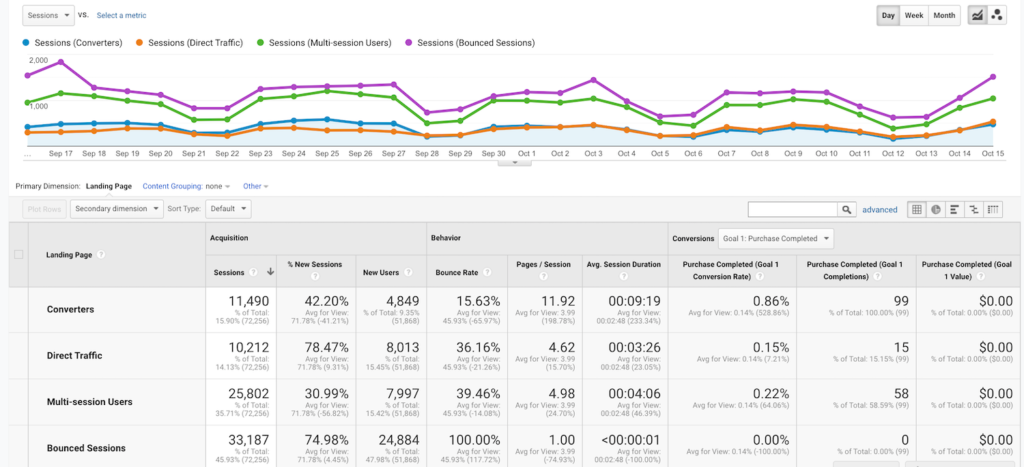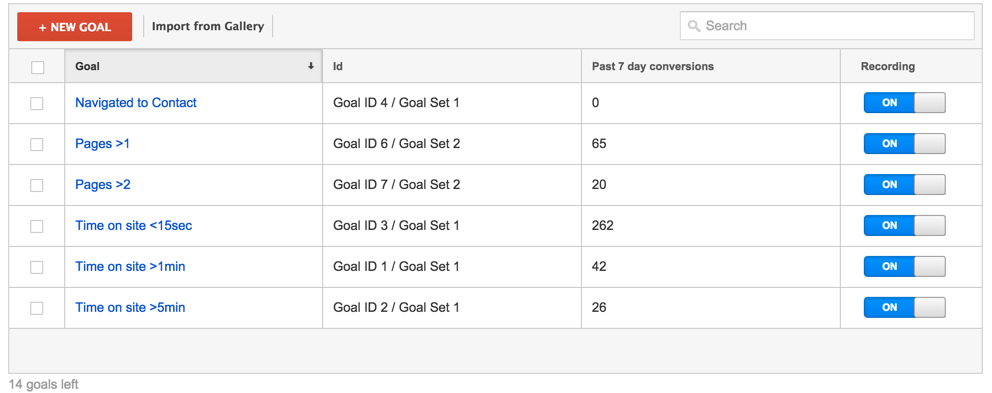Secret Insights on What Data Is Google Analytics Goals Unable to Track
Secret Insights on What Data Is Google Analytics Goals Unable to Track
Blog Article
Unveiling the Blind Spots: Recognizing What Google Analytics Goals Can not Gauge
In the realm of electronic analytics, Google Analytics stands as an effective tool for tracking and analyzing on the internet user interactions. Understanding what Google Analytics goals can not determine is vital for gaining an extensive view of customer habits and engagement.
User Actions on External Operatings Systems
Comprehending how customers communicate on exterior systems is important for enhancing online approaches. Outside systems, such as social media networks, reference sites, and on-line forums, play a substantial role in driving traffic to a business's website. By assessing individual behavior on these platforms, companies can gain useful insights into the performance of their advertising initiatives and the choices of their target audience.
One secret facet of user behavior on exterior systems is the recommendation resource. By tracking where the users are coming from, organizations can determine which systems are driving one of the most traffic to their website. This info can assist companies allot their sources much more successfully, concentrating on the systems that yield the finest outcomes.

Offline Communications and conversions
Evaluating user actions on external systems gives useful insights into online approaches; nonetheless, taking into consideration offline conversions and interactions is just as imperative for a thorough understanding of a company's total efficiency. Offline conversions, such as in-store purchases or phone questions, play a considerable duty in numerous businesses' success.

Attribution Beyond Last Click
When diving right into the world of digital marketing analytics, it ends up being important to look beyond the single touchpoint of the last click for a more detailed understanding of acknowledgment. While Google Analytics gives important understandings right into customer behavior, depending exclusively on last-click acknowledgment can be restricting - what data is google analytics goals unable to track. Acknowledgment versions that exceed the last click offer a more nuanced view of the customer journey, taking into account all the touchpoints that bring about a conversion
Acknowledgment beyond the last click enables marketing experts to assign credit scores to various interactions along the conversion course, offering a clearer image of the effectiveness of various advertising channels. By exploring multi-touch attribution models such as linear, time degeneration, or position-based acknowledgment, organizations can much better assign their advertising important link budget plans and optimize their strategies for optimal effect.
Understanding the impact of each touchpoint in the conversion procedure is critical for making educated decisions and optimizing ROI. By accepting acknowledgment past the last click, companies can obtain much deeper insights right into client behavior and customize their marketing initiatives better.
Cross-Device and Cross-Browser Tracking

In a similar way, cross-browser tracking complements cross-device tracking by catching user behavior as they change in between various internet internet browsers. Understanding how individuals communicate with internet sites on numerous browsers can help marketing experts optimize their online experiences to guarantee consistency and performance throughout different systems.
Qualitative Information and User Intent
Recognizing customer intent through qualitative data analysis is critical for creating targeted electronic advertising and marketing strategies that resonate with the needs and choices of the target market. Qualitative information supplies understandings into the 'why' behind individual actions, clarifying motivations, emotions, and choices that measurable data alone can not catch. By assessing individual comments, comments, and interactions, marketers can reveal beneficial info regarding individual intent, enabling them to tailor their messaging, web content, and offerings to much better wikipedia reference line up with what their audience is looking for.
Qualitative data also assists in comprehending the context in which individuals engage with a website or application. This contextual understanding allows online marketers to create more individualized and relevant experiences, ultimately driving greater interaction and conversion prices. By delving into individual intent through qualitative information analysis, organizations can get a deeper understanding of their target market, resulting in more reliable marketing approaches that fulfill individuals' expectations and demands.
Conclusion
In verdict, Google Analytics goals have restrictions in gauging individual actions on external systems, offline conversions, acknowledgment beyond last click, cross-device and cross-browser monitoring, and qualitative data associated with user intent. what data is google analytics goals unable to track. It is necessary for businesses to be conscious of these unseen areas in order to supplement their data analysis with various other devices and methods to acquire an extra comprehensive understanding of their audience and boost their total digital advertising and marketing strategies
By examining customer behavior on these platforms, services can obtain valuable insights into the effectiveness of their advertising initiatives and the choices of their target audience.
Analyzing user habits on outside systems gives useful insights into on-line strategies; however, taking into consideration offline conversions and interactions is equally crucial for a comprehensive understanding of a company's overall performance.In digital marketing analytics, moving beyond last-click attribution to discover cross-device and cross-browser monitoring is essential for gaining a holistic understanding of user interactions throughout numerous systems and devices. By evaluating user feedback, remarks, and communications, marketing professionals can discover useful info concerning customer intent, enabling them to tailor their messaging, content, and offerings to much better straighten with what Source their target market is seeking.
By delving into customer intent with qualitative data analysis, businesses can obtain a much deeper understanding of their target audience, leading to a lot more effective advertising and marketing strategies that fulfill individuals' assumptions and requirements.
Report this page